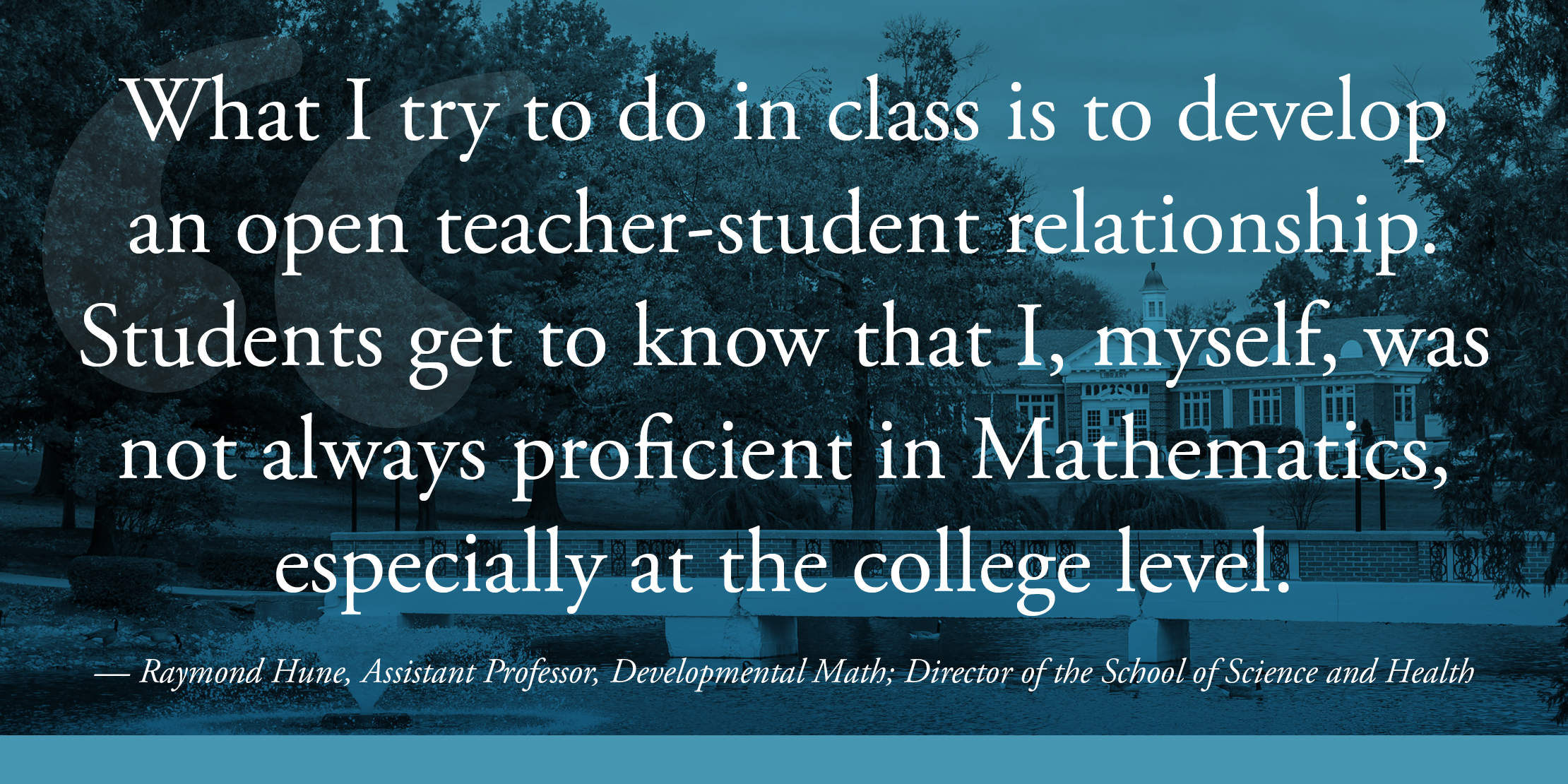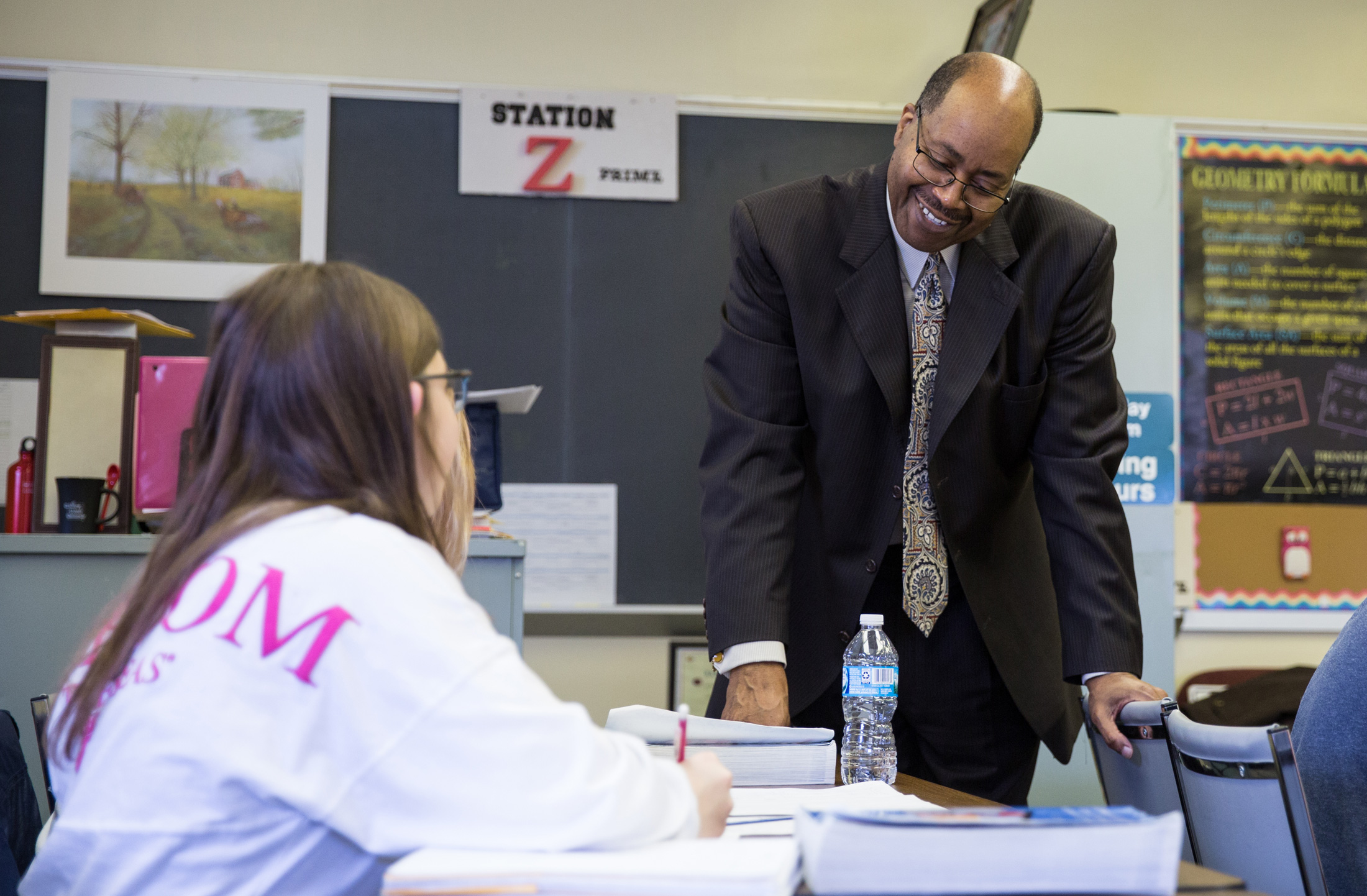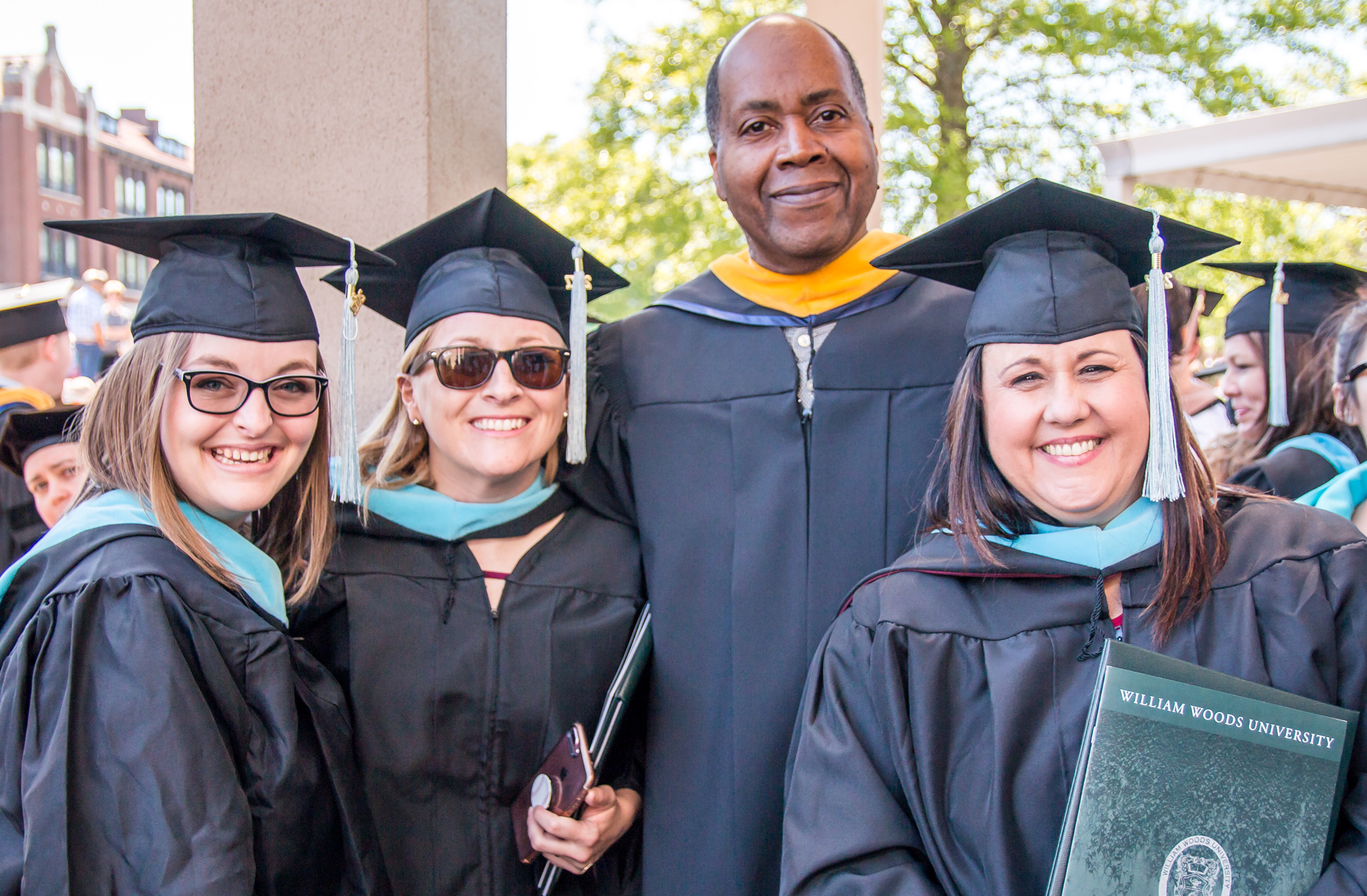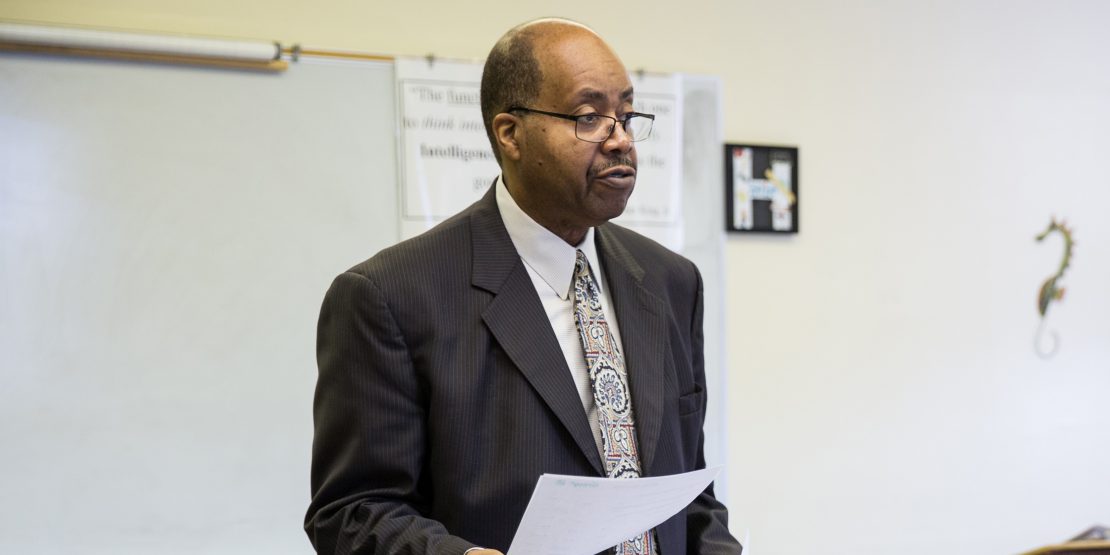Raymond Hune
Assistant Professor, Developmental Math; Director of the School of Science and Health

A Career Equation: From Elementary School Teacher to College Professor
My interest in Mathematics started when I got to high school, and I received A’s on my report card in math. So, when I went to college (St. John’s University in Minnesota), during my freshman year, I enrolled in a Pre-Calculus class where two types of exams were given, in-class tests and take-home tests. I performed well on the in-class tests but did poorly on the take-home exams. The final exam was a take-home test, and my final grade was a D. At that point, I realized that I had lost my confidence and desire to major in Mathematics. So, I changed my major to Elementary Education and went on to get a B.A degree. My first teaching job was as an elementary Mathematics teacher. After 3 ½ years of teaching elementary math, I regained my confidence and decided to go to graduate school (Webster University) to work on earning a Masters degree in Mathematics.
Arriving to The Woods – and Helping Solve a Problem

When I was teaching middle school math in Jefferson City, one of the Jefferson City School Board members who also taught at William Woods University talked about the possibility of teaching Developmental Mathematics classes at William Woods. He stated that some of the incoming freshman students were having difficulty passing college credit math classes. So, even though I enjoyed teaching Mathematics to seventh grade students, I felt that the greatest impact I could make would be helping freshman students have positive experiences in Mathematics. I was confident that I could make that positive difference teaching Mathematics at William Woods University, so I applied for the position, went through the interview process and the rest is history.
It All Adds up to Making the Biggest Difference
The main reason I wanted to teach at the college level was because I felt that was where I could make the biggest difference. If you are teaching on the elementary and middle school levels, students will always have additional opportunities to master and learn their basic Mathematics skills at their next educational level. For example, if you are teaching at the middle school level and for some reason, students haven’t mastered their basic Mathematics skills, they will still have the opportunity to do so at the next level, which is high school. When you’re teaching Mathematics at the college level, if students haven’t mastered the basic skills by the time they graduate, those students become the adults who may end up hating Mathematics for the rest of their life.
What I try to do in class is to develop an open teacher-student relationship. Students get to know that I, myself, was not always proficient in Mathematics, especially at the college level. However, one of life’s lessons that I want students to learn is that you don’t have to like something in order to do it well. Which means that if you have a dislike for math it is no excuse for performing poorly in that subject. It is very easy for me to relate to students who perform poorly in Mathematics, as much as those who excel in it. My experiences at both ends of the spectrum have taught me a great deal about patience. I like to use the phrase “you can’t rush perfection,” because it takes time. I’ve also learned that developing wholesome relationships with students is important and time-sensitive.
Part of my objective in developing positive relationships is to learn what students like and dislike about Mathematics. Think about it from this perspective, from a baseball analogy:
- strike one [is that] students dislike math
- strike two [is that] students dislike the teacher, the one providing the instruction
But developing a good relationship with students can avoid the third strike from occurring because very little learning can take place when you already have two strikes against you.
Therefore, it is important to develop a culture of trust with your students. I let students know that it is okay to not like Mathematics; however, it is necessary to learn the concepts and real-world applications of math.
Advantages of Mathematics Classes? Let’s Count Them

We have five students majoring in mathematics; however, the Mathematics Faculty will have the opportunity to teach and interact with all students who have not transferred in any mathematics credits, as well as some who have.
Students will have the opportunity to join the Kappa Mu Epsilon Mathematics Honors Society. The Kappa Mu Epsilon Mathematics Honor Society has been active on the William Woods University campus for the past three years. Students are eligible to join if they have successfully taken Calculus I and II. An induction ceremony for new members takes place every year during the Student Performance Day Events. We have sophomores, juniors, and seniors who are members of the society.
There are a multitude of career opportunities that employ professionals with a Mathematics degree. WWU has recent graduates with Mathematics degrees who have gone into the teaching profession, are working at accounting firms, banking and the loan industry. We have an alumnus who is an Actuary in St. Louis. If students can become aware of the many career opportunities available for professionals that have skills in Mathematics-related fields, greater interest in Mathematics can be developed.
Life in the “After-Math”

I would like to go visit different cities that have National Basketball Association (NBA) teams. I am a huge NBA fan and I love to watch NBA games. During the winter months, when time allows, my dream is to go to cities with warm climates like Los Angeles, Miami or Phoenix and catch a game. One of my goals, once my teaching career comes to a close, is to visit every city that has an NBA team. At some point, you have to start to think about how you are going to stay mentally and physically active once your teaching career comes to an end. Therefore, when I retire, I look forward to a healthy and enjoyable standard of living.
| Learn more about the William Woods Mathematics program |

